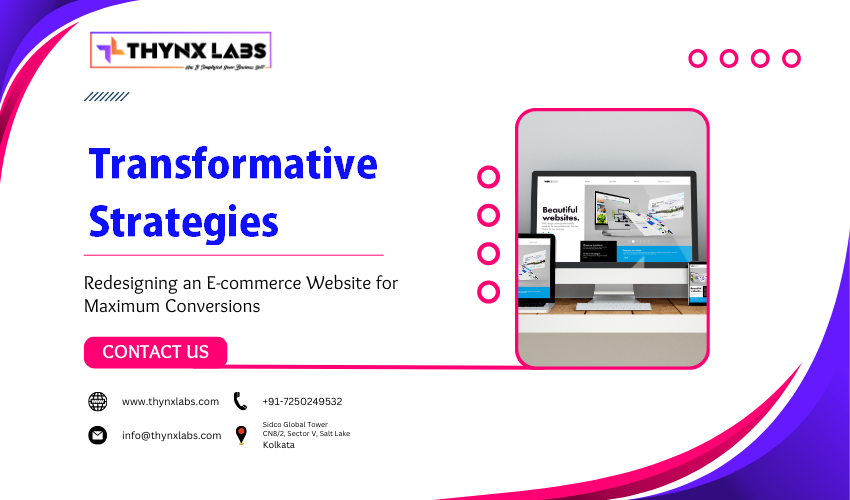Digital Marketing for E-commerce Success
Unleashing the Power of Digital Marketing for E-commerce Success
In the dynamic landscape of online commerce, digital marketing stands as the linchpin for driving visibility, engagement, and ultimately, success. Let's explore the strategies and tactics that define effective digital marketing for e-commerce, empowering businesses to thrive in the competitive digital marketplace.
1. Strategic Search Engine Optimization (SEO): Elevating Online Visibility
Keyword Optimization
Conduct thorough keyword research to identify relevant terms and phrases in your industry. Optimize product pages, category descriptions, and blog content with strategically placed keywords to enhance search engine visibility.
Quality Content Creation
Craft compelling and informative product descriptions, blog posts, and landing pages. High-quality content not only engages visitors but also signals to search engines that your site provides value, contributing to improved search rankings.
Mobile Optimization
With a significant portion of e-commerce traffic coming from mobile devices, ensure your website is optimized for mobile usability. Google prioritizes mobile-friendly websites, impacting search rankings and providing a seamless experience for users.
2. Effective Pay-Per-Click (PPC) Advertising: Targeted Campaigns
Keyword-Focused Ads
Utilize PPC advertising to target specific keywords related to your products. Craft attention-grabbing ad copy, incorporate relevant keywords, and direct users to optimized landing pages to maximize the effectiveness of your PPC campaigns.
Retargeting
Implement retargeting campaigns to re-engage users who have visited your site but haven't made a purchase. Tailor ads based on users' previous interactions, reminding them of products they showed interest in and encouraging conversions.
3. Engaging Content Marketing: Building Brand Loyalty
Blogging
Maintain a blog to share informative and relevant content related to your products or industry. Blog posts not only contribute to SEO efforts but also position your brand as an authority, fostering trust and loyalty among your audience.
Visual Content
Leverage visual content such as high-quality images, infographics, and videos to showcase your products. Visual elements are powerful tools for conveying information, capturing attention, and influencing purchasing decisions.
4. Social Media Integration: Connecting with Audiences
Platform-Specific Strategies
Tailor your approach on different social media platforms to align with user demographics and behaviors. Share engaging content, run targeted ads, and actively engage with your audience to build a vibrant social media presence.
Influencer Collaborations
Partner with influencers relevant to your industry to reach a wider audience. Influencers can create authentic content showcasing your products, providing social proof and driving traffic to your e-commerce site.
5. Data-Driven Analytics: Informed Decision-Making
Conversion Tracking
Implement conversion tracking to monitor user actions on your website, such as purchases, sign-ups, and form submissions. Analyze this data to understand user behavior and optimize your site for improved conversions.
Customer Segmentation
Segment your customer base based on demographics, behavior, and preferences. Tailor marketing campaigns and promotions to specific segments, ensuring a personalized experience for each audience group.
Implementing Your Digital Marketing Strategy
Continuous Optimization
Regularly analyze performance metrics across all digital marketing channels. Identify areas for improvement, experiment with different strategies, and adapt your approach based on data-driven insights. Continuous optimization ensures your digital marketing efforts remain effective and aligned with evolving trends.
Embrace Emerging Technologies
Stay abreast of emerging technologies and trends in digital marketing. Explore innovations such as augmented reality (AR) for product visualization, artificial intelligence (AI) for personalized recommendations, and voice search optimization to adapt to changing consumer behaviors.
Conclusion
Digital marketing is the cornerstone of e-commerce success, offering a multifaceted approach to drive visibility, engage audiences, and foster growth. By strategically implementing SEO, PPC advertising, content marketing, social media integration, and data-driven analytics, e-commerce businesses can navigate the digital landscape effectively. As you embark on your digital marketing journey, remember that the key lies not only in the implementation of individual strategies but in creating a cohesive and dynamic approach that adapts to the ever-evolving nature of the online marketplace.


